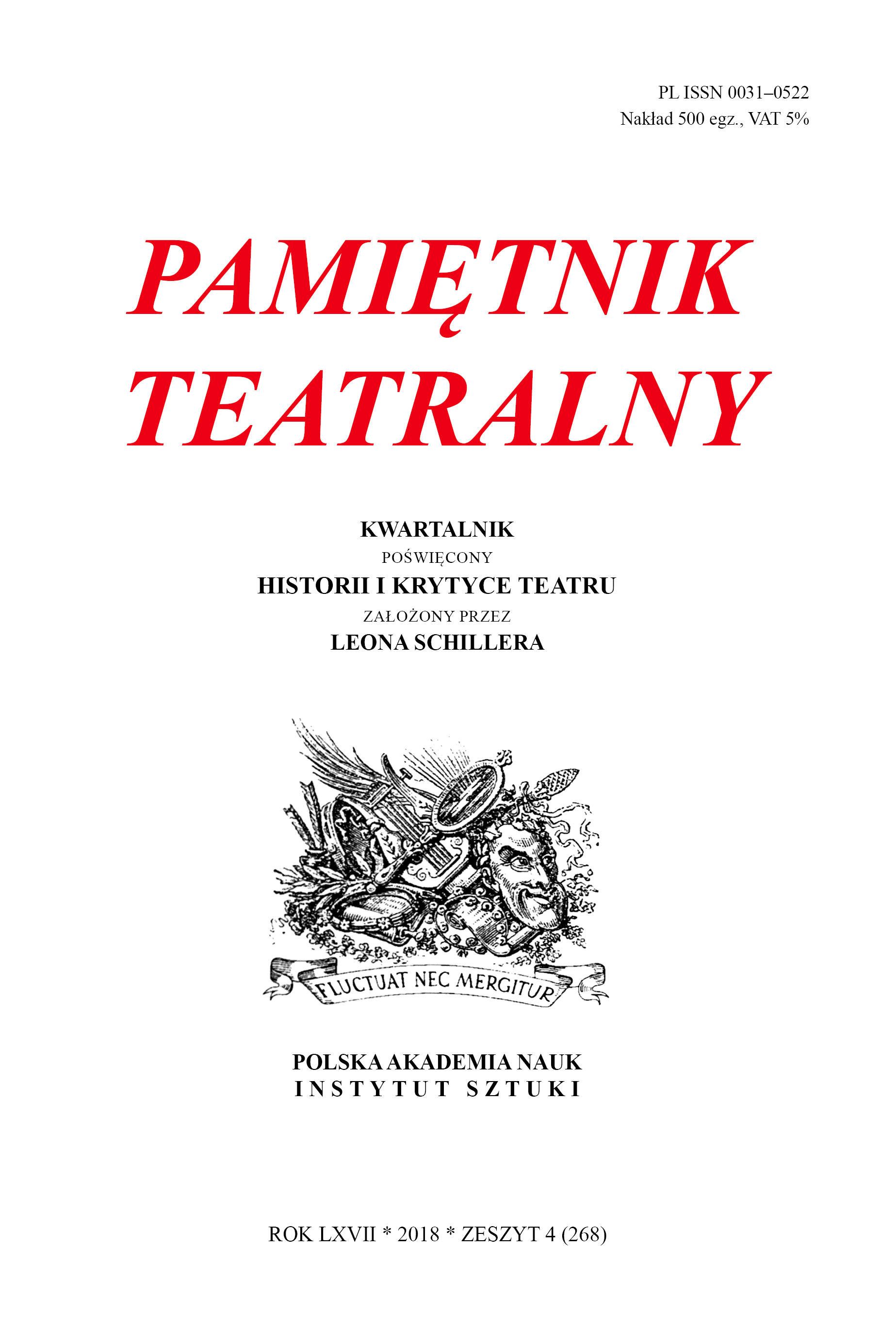Tragedia i dwór
Tragedy and the Court
The Actual State of Affairs and Polemic Use of the Stereotype in the History of Polish Translations of Corneille’s and Racine’s Work
Author(s): Michał BajerSubject(s): Theatre, Dance, Performing Arts
Published by: Instytut Sztuki Polskiej Akademii Nauk
Keywords: Polish culture of the 18th century;18th-century Polish drama;Polish literature of 18th cenury;Polish court theatre;Seweryn Rzewuski;Stanisław Wincenty Jablonowski; Udalryk Krzysztof Radziwill;
Summary/Abstract: The reception of the plays by Pierre Corneille and Jean Racine through translation, which began in the 17th century, was a breakthrough moment in the history of Polish tragedy. By the time of Jan Andrzej and Stanisław Morsztyns, the royal court had become a privileged circle of receiving the French model of serious drama. The trend continued in the 18th century, but the interest of translators in the output of the two tragedians spread into first aristocratic and then nobility courts as well. A notable example from the Saxon times is a fragment of a 1715 translation of Corneille’s Le mort de Pompée that can be found in a silva by Stanisław Wincenty Jabłonowski. Racine’s work, on the other hand, inspired magnate translators, such as Udalryk Krzysztof Radziwiłł or Seweryn Rzewuski. The ties with the court theatre could also be found in the way Piarists, and Stanisław Konarski most notably, put on school theatre spectacles. The trend lived on under the reign of Stanisław August Poniatowski as well. Additionally, there was a surge of interest in French théâtres de société. At courts, the translations of French classical tragedies continued to appear either in manuscript (Stanisław Wodzicki) or in print (Wojciech Turski). After the reign of Stanisław August, the tradition of court theatres still influenced the reception of French tragedies, but in more indirect, and sometimes surprising, ways: confronted with the difficult situation of the genre in the repertories of commercial theatres, for example, Osiński produced Corneille’s Horace (1802) as an amateur play in order to popularise it. Theatre criticism of the Towarzystwo Iksów [the Exes’ Society], intent on promoting tragedy, was connected with the court through the social status of its members and their actions behind the scenes. In the last of the abovementioned periods—to some extent due to the Towarzystwo Iksów whose actions inadvertently exemplified some criticisms levelled by European critics of the time, like Schlegel—negative associations surrounding French tragedy and the court as a place of moral decay, overly ritualistic behaviours and insensitivity towards problems of society as a whole came to the fore. This, however, does not fully define the stereotype of courtliness ascribed to the work of Corneille and Racine. In Kopystyński’s life, translating Racine appears to be a perfect otium for an educated nobleman living in his family mansion in the country. In the post-partitioning period, a legend about the staging of Le Cid at the court of King Jan Kazimierz emerged, although it was based on false premises. French tragedy is presented as an important factor shaping the national tradition.
Journal: Pamiętnik Teatralny
- Issue Year: 268/2018
- Issue No: 4
- Page Range: 55-86
- Page Count: 32
- Language: Polish

